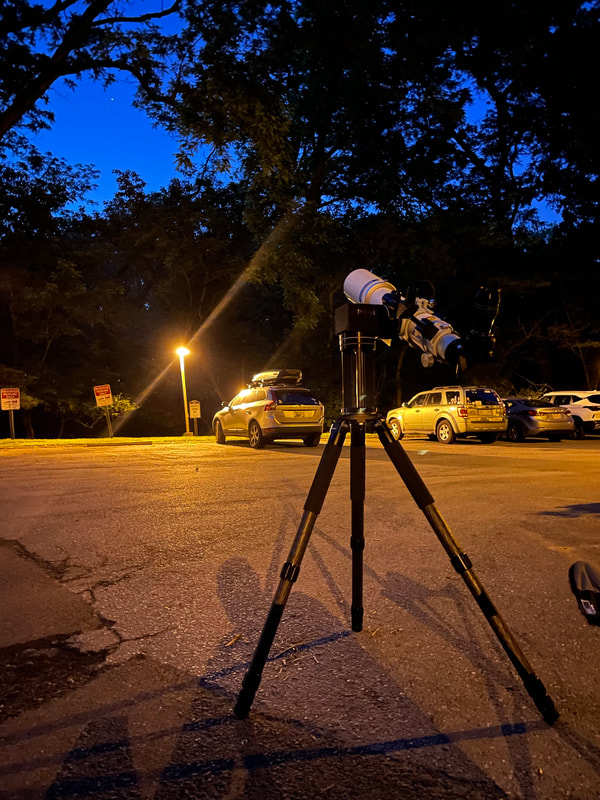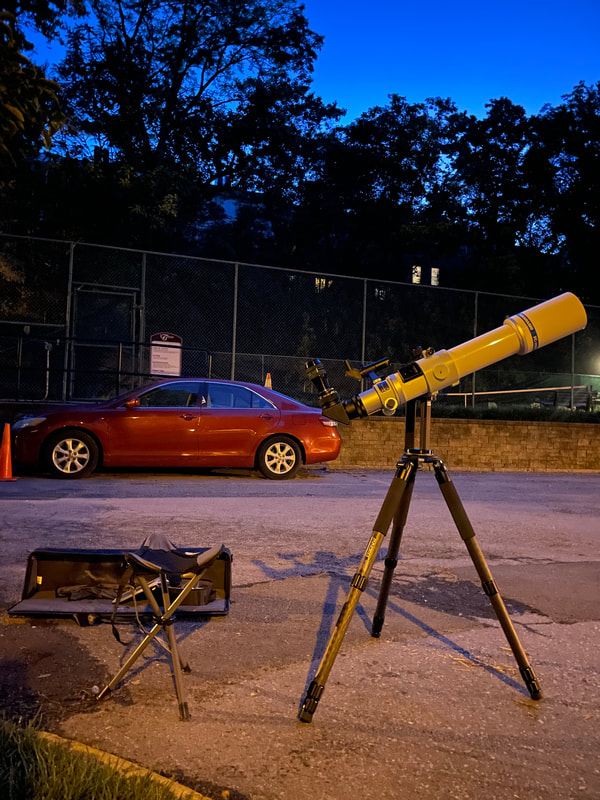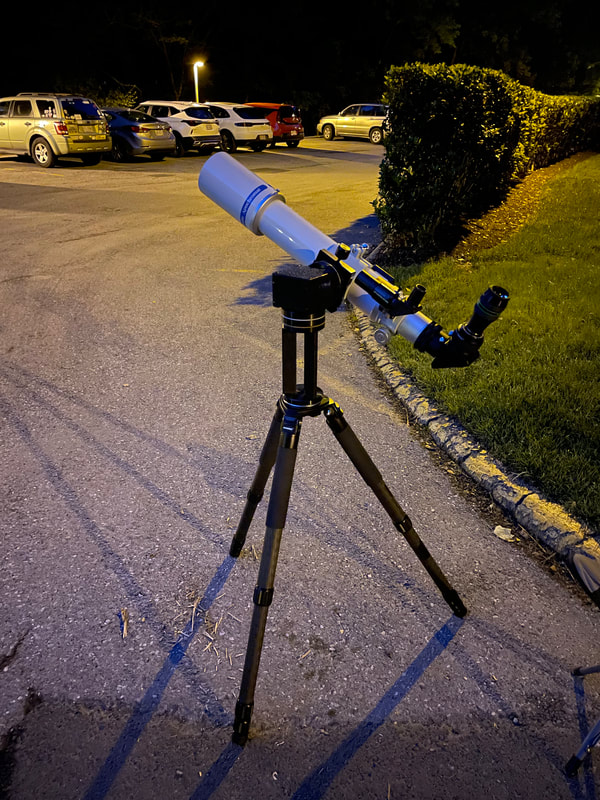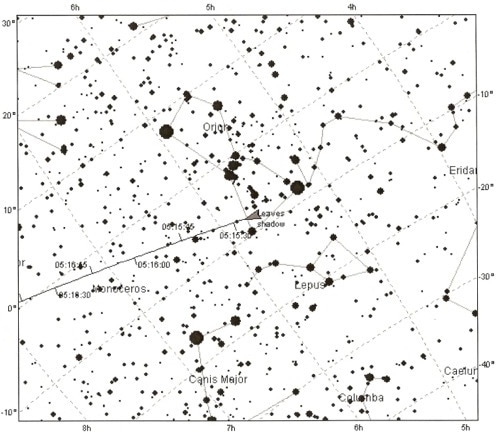|
The planets are rising high above the early morning horizon, and for once the forecast called for good seeing. I slept fitfully until 4:15 AM, nearly convinced myself to fall back asleep, and finally slipped out the back door at 4:45. I soon found that I couldn't see a planet from my backyard, but I did find a spot nearby where a gap in the trees revealed two brilliant planets. They were remarkably close together - not much more than Jupiter and Venus were about a month ago. With the Sun beginning to brighten the morning sky, I set up my Takahashi and targeted the brightest of those planets. At first, I thought it must be Venus - that's how bright it was - and I assumed the less brilliant, yellowish planet was Jupiter. For a minute or two I thought my finderscope must be misaligned. I kept targeting the brightest planet, and time and again Jupiter showed up in the eyepiece. Finally, it dawned on me - a little later than it might have, had I had more sleep - that in fact the brilliant planet was Jupiter. I was astonished to find that the dimmer - but still very bright - planet was Mars. It's so much brighter now than it was just a month ago - and that, of course, means that it's fast approaching Earth. I was a little disappointed upon observing Jupiter. Towards the eastern horizon, the seeing was a little worse than I'd expected, and although I could make out many salmon-colored belts, shimmering in the tremulous atmosphere, the planet seemed a little washed out. It lacked the vivid reds and ochres that sometimes create such striking contrast on Jupiter. At just over 200x the Galilean moons were tiny disks, but without obvious differences in color. Mars, by contrast, was a deeper red than I've normally seen it. For the first time in two years, I made out a polar icecap - this one the southern icecap - and a dark ring around it that was, in the late nineteenth century, widely assumed to be meltwater lake draining off the cap. I could also discern dark streaks shooting up towards the Martian equator. In the nineteenth century, many astronomers - not just Percival Lowell - figured that these were canals and oases channelling polar meltwater towards cultivated fields. That was how the Martians were thought to cling to life on a drying and cooling world.
Mars is my favorite planet to observe when it nears its biannual opposition (and it's free of planet-encircling dust storms). This morning reminded me of the morning of June 9th, 2020, when I observed Mars for the first time through my FC-100DC, as it began to approach Earth that year. That morning, I was stunned to discern the southern icecap for the first time, along with dark albedo features that had never been visible to me before. It excited me to no end to realize how much more could be visible as the planet wheeled closer and closer to Earth that fall. I have much the same feeling now. I truly can't wait to see what Mars will bring this year. I wonder what I'll be able to glimpse with telescopes that are a little better than those I had in 2020.
0 Comments
Leave a Reply. |
Archives
March 2024
Categories
All
|






 RSS Feed
RSS Feed